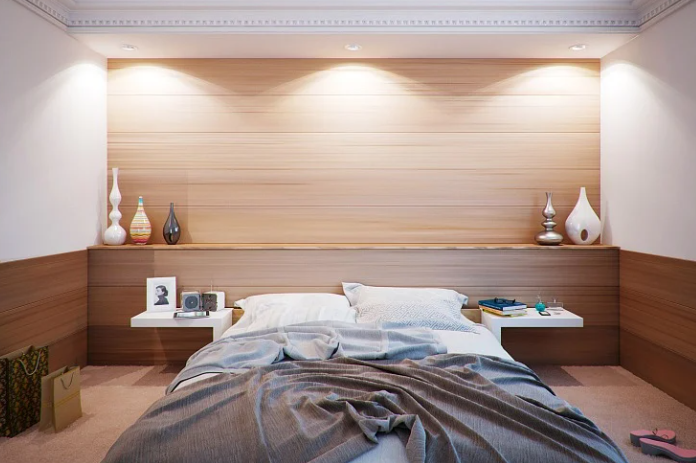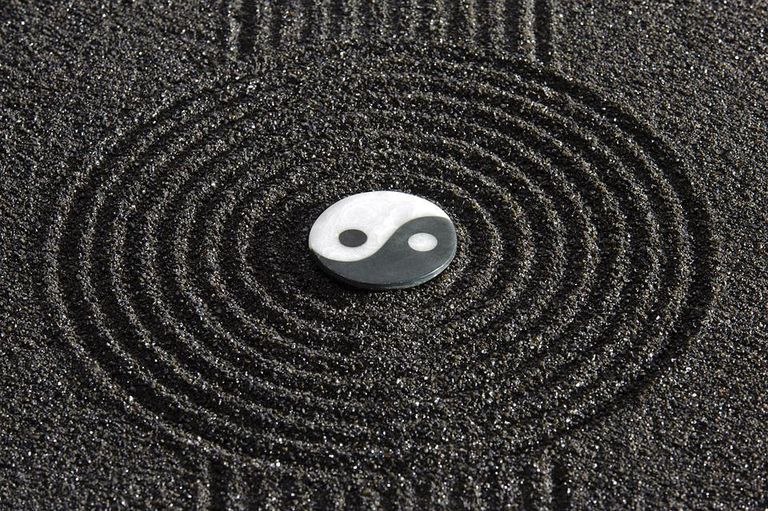Have you been having a lot of problems to sleep lately? Getting a lot of nightmares? Maybe waking up in cold sweats?
Do you feel extremely tired, lethargic and stressed when you wake up, like you've been running miles in your sleep or like you've just been rolled over by a truck? Wait, hold up on the sleeping aid. Before you try conventional medicine, maybe you could just trying cleaning your room and moving your bed.
Yesterday, friends, I continued a cleaning exercise I started earlier in the week and reorganized my bedroom- shook things up a bit. One practice I was careful to focus on was the placement of our bed- away from the window, away from mirrors, head to the South, feet to the North, etc. This is a vastu shastra or feng shui design practice I learned from my mom growing up, though I don’t think she knew anything about vastu shastra or feng shui, at least not directly.
What is Vastu Shastra?
Yogapedia, describes vastu shastra as the yoga of design, explaining that it is a Sanskrit term that translates to the science of architecture.
It incorporates many architectural design ideas, such as space, arrangement, layout and measurements… Buildings constructed using the principles of vastu shastra are said to provide a healthier living space and a better energy balance.
Wikipediaexplains that vastu shastra are texts on the traditional Indian system of architecture. Vastu shastra designs “aim to integrate architecture with nature”.
What is Feng Shui?
According to Wikipedia, feng shui or Chinese geomancy “is an ancient Chinese traditional practice which claims to use energy forces to harmonize individuals with their surrounding environment.”
The National Geographicdescribes it as “an ancient Chinese art of arranging buildings, objects, and space in an environment to achieve harmony and balance.”
The term feng shui, loosely translated, means the way of wind and water or fluid. According to Taoist belief, chi or Qi, the life force that inhabits everything, is the universe’s cosmic energy made up of yin and yang elements, opposing but complementary forces that cannot be separated, which trace the same patterns as wind and water. It was believed that by practicing feng shui, people invite positive chi: good health, positive relationships, luck and prosperity.
Feng Shui/ Vastu Shastra Bedroom Design Principles
In the 2019 Healthline article, What the principles of Feng Shui and Vastu Shastra Say about Sleep Direction, Kristeen Cherney wrote, “The recommended sleeping direction per vastu shastra is that you lie down with your head pointed southward.”
Cherney explains that according to this principle, “The human head is considered to have a polar-like attraction, and it needs to face southward to attract opposite poles while you sleep.”
Vastu shastra also recommends:
- Avoiding mirrors facing the front of the bed
- Decluttering your bedroom, etc.
Feng shui recommends:
- Decluttering,
- Putting your bed on the opposite side of the doorway,
- Ensuring that your bed is not underneath windows,
- Keeping the bed away from mirrors in the direct line of sight,
- Keeping electronics out of the bedroom.
What my mother believed
When my mother taught me these design principles, she didn’t know anything about feng shui or vastu shastra. Yet she told me that lying north to south was the position of the dead and placing mirrors in the direct line of sight of your bed exposes you to “jumbies” (a Caribbean term for evil spirits).
Interestingly enough, among Hindus, I believe, a dead body is positioned with its head in the North before cremation as it is believed that the soul exits the body through the north.
Similarly, feng shui recommends moving your bed out of the line of sight of mirrors so that you aren’t shown reflections in your sleep.
Of course, my mother may not have realized that her beliefs were so influenced or maybe she inherited her beliefs about bedroom design from her mom who may have been the one exposed to and influenced by these ancient Asian design beliefs. Who knows?
The influence isn’t at all surprising because in my country, Trinidad and Tobago, our culture is relatively young and draws upon a mix of Native Amerindians/ First Peoples, Europeans, West Africans, Asians, Syrians etc. And so, in this instance, there’s no dismissing the influence the Asian communities (Chinese and East Indian) have had on local beliefs and practices.
Conclusion
And so, to conclude, my friends, while I know modernist thought sometimes shrugs off ancient tradition because maybe we’d say that it can’t be proved by scientific thought- at least until it is- I’ve learned, particularly as I grow older, that sometimes while older generations may not have had the tools at their disposal that we do, they were definitely onto things that we’re not. And besides, it doesn’t hurt to turn my bed- head to the South, feet to the North.
This article was first published on my blog on Read Cash.

